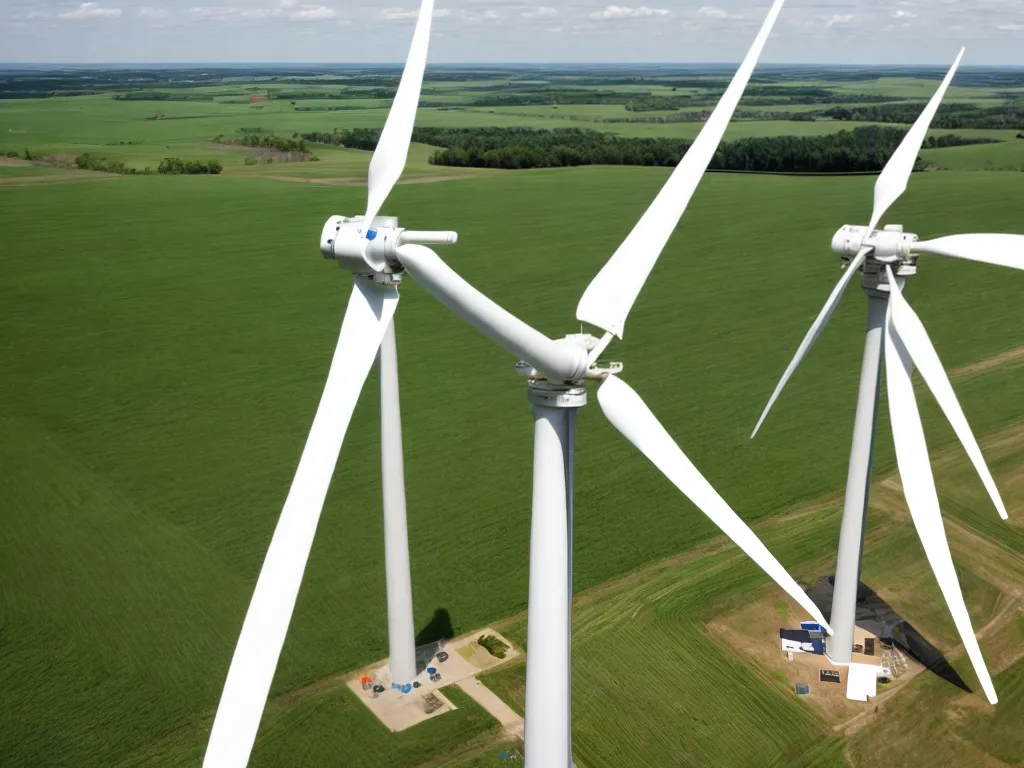
I've been fascinated by renewable energy for years. After dabbling in solar power, wind energy caught my attention for its potential to provide clean, cost-effective electricity on a small scale. Like many DIYers, I started with a simple homemade wind turbine made from spare parts. But as my skills grew, so did my ambition to scale up my home turbine design.
Scaling up a wind turbine is no simple task. You need to carefully consider the design, materials, tower height, and more to handle the increased size and power output. This guide shares everything I've learned through trial and error about how to successfully scale up a homemade wind turbine. If you're itching to level up your renewable energy project, read on!
Choosing the Right Site
The location of your homemade wind turbine is crucial when scaling up. Larger turbines require more wind to operate efficiently. Before construction, thoroughly assess your site's wind resource.
- Use an anemometer to collect wind speed data. Measure at multiple heights to determine wind shear.
- Ideal average wind speeds are 10 mph or greater.
- Consider turbulence and obstructions like trees or buildings.
- Higher elevations and wide open spaces are best.
Ideally, choose a site with the highest, most consistent wind speeds possible. This gives a larger turbine the best chance of reaching optimum power production.
Tower Height and Design
The hub height of a wind turbine significantly impacts performance. As a rule of thumb, every 10 meters of increased tower height boosts energy production by 10% or more.
Determining Tower Height
- For small turbines, match the tower height to the blade diameter. For example, a 5 ft blade diameter turbine should be mounted on a 30-40 ft tower.
- For larger turbines, a minimum height of 80 ft is recommended, though taller is better.
- Consider zoning laws and permitting requirements for tall structures.
Tower Design Options
- Tilt up towers are easiest for DIY construction using wood poles or metal pipe segments. They allow the turbine to be lowered for maintenance.
- Guyed lattice towers are more complex but can achieve greater heights using guy wires for support.
- Towers must withstand substantial lateral and vertical loads. Proper engineering is a must!
Building a sufficiently tall, sturdy tower is a key part of scaling up a wind turbine. Don't cut corners here, or the entire project will be at risk.
Blade Design and Diameter
Along with tower height, the size and design of your wind turbine's blades largely determines power output.
Blade Length
- Most homebuilt turbines use blades 5-10 feet long. But for scaling up, 8 feet should be the minimum length, with 10-15 feet being ideal.
- Longer blades capture more wind energy. But the tradeoff is greater material cost and loads on the system.
Other Blade Design Factors
- The optimum blade shape balances aerodynamic efficiency with structural integrity. Consider an airfoil design.
- Larger blades require a sturdier structure to handle the forces involved. Wood, steel, aluminum and fiberglass are common materials.
- Adding a twist to the blade can optimize angle of attack across different radii.
Proper blade design is a complex endeavor, but essential to extracting more power from your scaled up turbine. Consult wind energy engineering resources for guidance.
Generator Size and Voltage
The generator converts the mechanical power captured by the turbine blades into electrical power. For a larger turbine, you'll need a larger generator properly matched to the expected power output.
- Look for generators in the 3-10 kW range for most DIY scaled up turbines.
- Consider the generator's voltage - typical wind turbines output 24V, 48V or 120V.
- Ensure your generator can handle variable rotational speeds from the turbine.
It's worthwhile to have your turbine professionally analyzed to determine the optimal generator specifications. Undersizing or mismatching the generator wastes your turbine's potential.
Managing Electrical Loads and Batteries
At an increased scale, your wind turbine will likely produce more power than you can use directly. Properly managing electrical loads and battery storage is key.
- Use a diversion load controller to route excess power to a dump load, like a water heater.
- Estimate your daily household loads to properly size a battery bank for storing power.
- Choose deep cycle batteries designed for renewable energy systems.
Develop a plan ahead of time for making the most of the extra power your larger turbine will produce. Grid-tied systems can avoid battery costs altogether.
Braking System
Larger turbines spin at high speeds and generate considerable torque. A braking system is essential to stop the blades in high winds and for maintenance.
- Disk brakes, furling tail fins, and pitch control systems help regulate speed.
- Hydraulic and mechanical brakes can bring the blades to a full stop.
- A fail-safe redundant braking system is highly recommended.
Don't overlook the importance of controlled braking when scaling up your wind turbine project. Safety should be the top priority.
Consult Local Permitting and Regulations
Finally, be sure to research permitting requirements and zoning regulations for your area. The scale-up of a homebuilt wind turbine may be impacted by:
- Height restrictions - Taller towers often need permits.
- Noise limits - Larger turbines naturally make more noise.
- Setback rules - Distance between turbine and property lines.
- Aesthetic rules - Some areas prohibit lattice towers.
- Aviation warnings - May require aircraft safety lights.
Navigating local zoning codes can be frustrating. Build goodwill through transparency, safety diligence, and minimizing nuisance impacts on your community.
Scaling up a homemade wind turbine is an exciting and rewarding project, but not without challenges. By following this guide and leveraging quality engineering resources, your ambitions of increased renewable energy production can become reality! Start planning your project upgrade today.